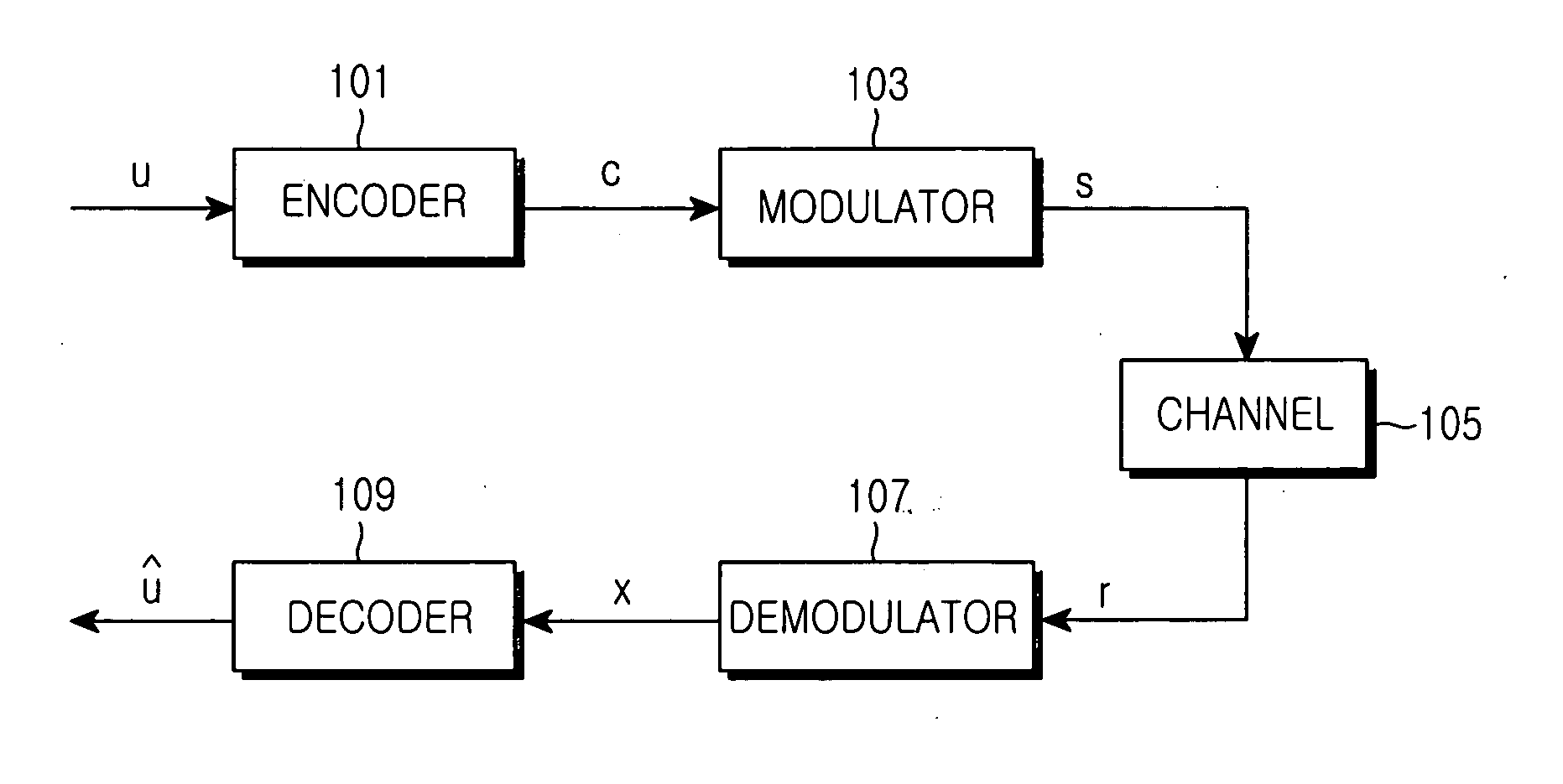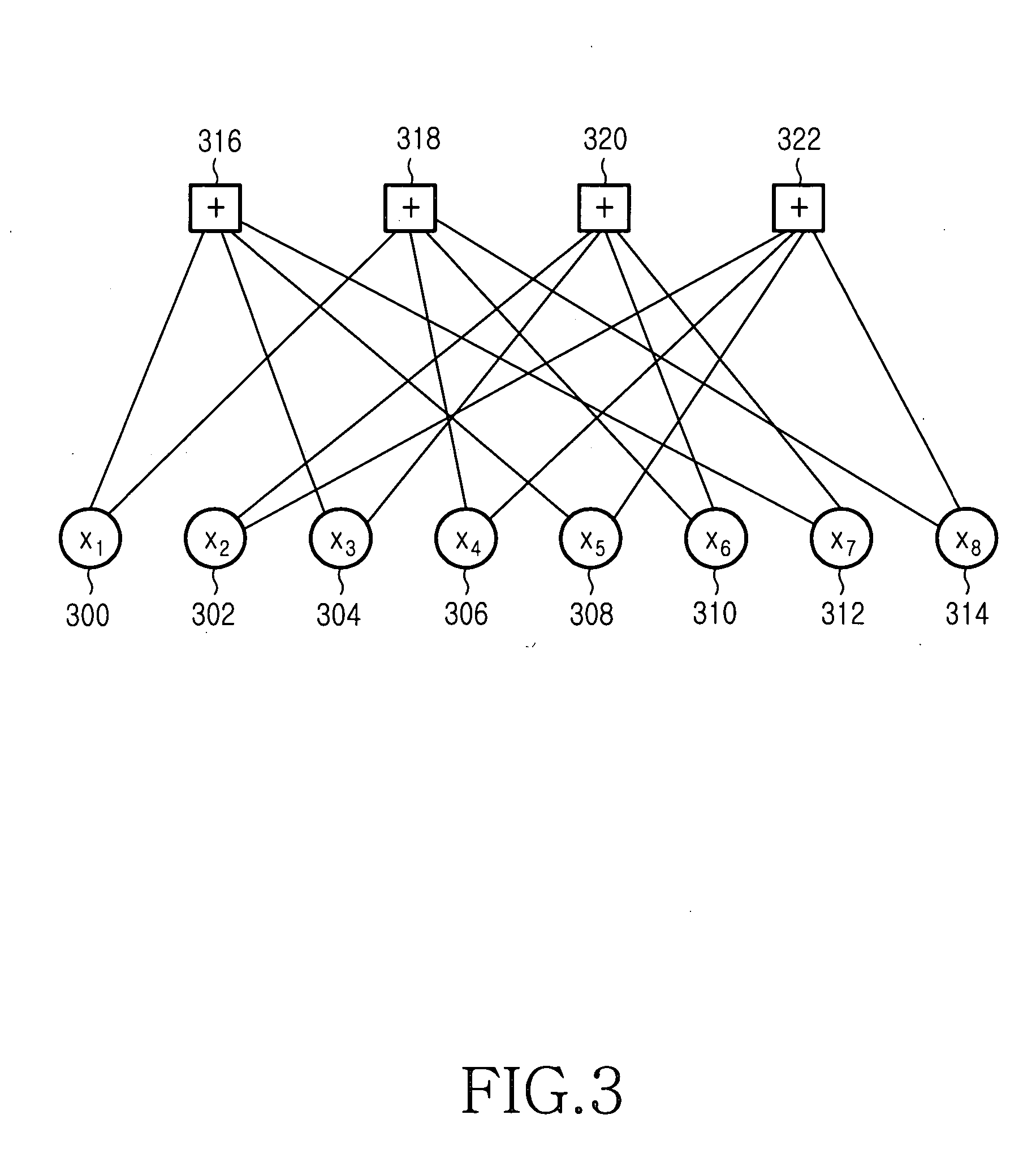Channel coding/decoding apparatus and method using a parallel concatenated low density parity check code
a channel coding/decoding and parallel technology, applied in the field of channel coding/decoding apparatus and methods, can solve the problems of information loss, and inability to detect errors in the channel, and achieve the effect of low decoding complexity
- Summary
- Abstract
- Description
- Claims
- Application Information
AI Technical Summary
Benefits of technology
Problems solved by technology
Method used
Image
Examples
Embodiment Construction
[0067] Preferred embodiments of the present invention will now be described in detail herein below with reference to the annexed drawings. In the following description, a detailed description of known functions and configurations incorporated herein has been omitted for conciseness.
[0068] The present invention proposes an apparatus and method for encoding / decoding a channel signal using a parallel concatenated Low Density Parity Check (LDPC) code supporting various code rates. In the various schemes proposed to reliably transmit / receive a large volume of data at high speed, such as a Hybrid Automatic Retransmission Request (HARQ) scheme and an Adaptive Modulation and Coding (AMC) scheme, various code rates must be supported.
[0069]FIG. 4 is a block diagram illustrating an internal structure of a channel encoding apparatus using a parallel concatenated LDPC code according to an embodiment of the present invention. Referring to FIG. 4, the channel encoding apparatus includes a plural...
PUM
 Login to View More
Login to View More Abstract
Description
Claims
Application Information
 Login to View More
Login to View More - R&D
- Intellectual Property
- Life Sciences
- Materials
- Tech Scout
- Unparalleled Data Quality
- Higher Quality Content
- 60% Fewer Hallucinations
Browse by: Latest US Patents, China's latest patents, Technical Efficacy Thesaurus, Application Domain, Technology Topic, Popular Technical Reports.
© 2025 PatSnap. All rights reserved.Legal|Privacy policy|Modern Slavery Act Transparency Statement|Sitemap|About US| Contact US: help@patsnap.com



